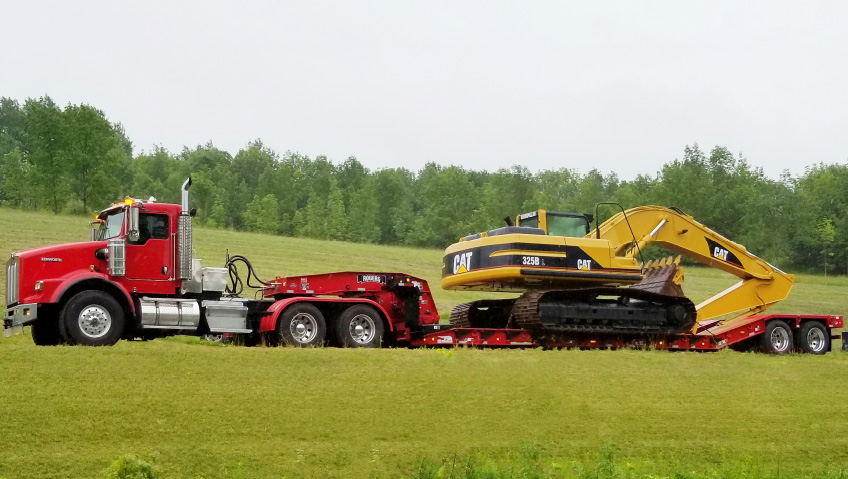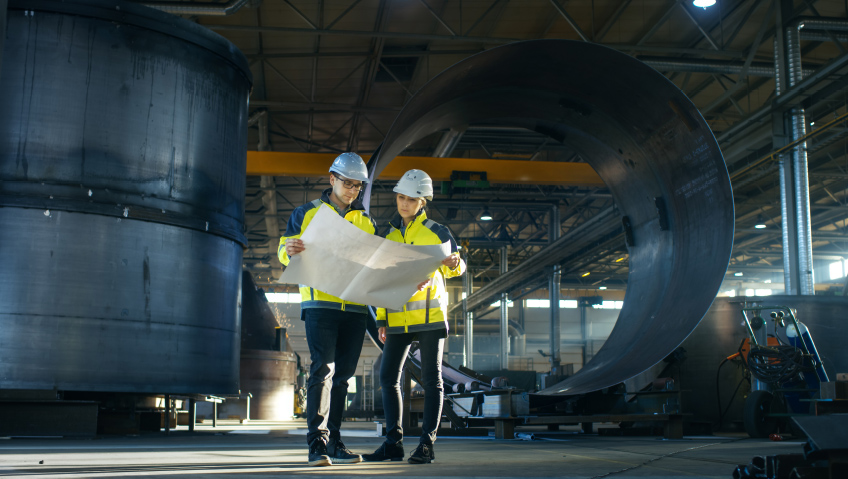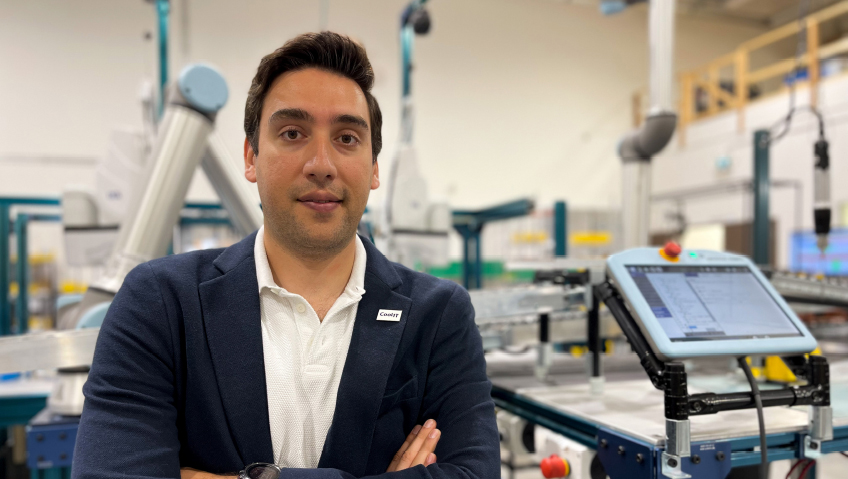It’s everyone’s expectation – and their right – that throughout their day their workplace is free from hazards and is a healthy place to spend their working hours. But is this just a moral duty to employees or are there other benefits?
In the higher-risk manufacturing sectors falling, slipping on loose ground materials, tripping, and exposure to toxic chemicals are all contributors to injury, time off work, illness, and even death in some instances.
It’s the responsibility of the employer and even the employee to take a proactive, strategic approach to reducing these risks. And an effective and well-implemented workplace safety and health program can prove invaluable.
So it’s a given that workplace health and safety should be in the mission statement of any manufacturing company, regardless of size. And every employee needs to be responsible for abiding by safety policies mandated by a manufacturer. But safety, while by far the most important reason for attention to this basic principle, has some important side effects, all beneficial.
Productive safety
An international leader in industrial services, Advance Technology Services, in partnership with Plant Engineering magazine, conducted a study where researchers discovered that “83 percent of senior management and operations personnel witnessed a noticeable rise in productivity levels following the implementation of a safety program.”
These same researchers also saw a decrease in the costs of injuries and insurance claims.
According to David Miller, Advanced Technology Services’ senior director of environmental health and safety, “The results of this survey prove the primary importance of safety within today’s manufacturing environments.”
He adds that, “Only those manufacturing facilities which continue to emphasize safety as a top-level issue will remain highly productive and competitive in today’s marketplace.”
Essential training
Manufacturers can play a vital role in employee safety and health by offering assurance that both new and existing employees are comprehensively trained in their job responsibilities and are aware of the numerous safety protocols in place.
Safety-training software aids manufacturers by saving time and improves efficiency in their safety departments through hazard reporting, incident reporting, job safety analyses, mobile inspections, and behavior-based safety, for example.
Over the past decade, there has been a decline in work-related injuries according to some experts.
This is due in part to advances in technology and ergonomics programs. But there is still more to be done in the manufacturing sector to improve worker health and safety. It takes thorough training to bring new workers into any manufacturing facility. And it can be a challenge.
“There’s a learning curve for onboarding,” says Brian Kramer, manufacturing industry practice leader for the insurance company The Hartford. “Promoting worker safety goes beyond the safety manual or handbook. It’s about creating a culture that’s committed to, and very much focused on, safety and accountability.”
The Hartford indicates that, “The learning curve for new workers with a year or less of experience is steep and closely tied to injury rates. Employees with one year or less of experience accounted for 35 percent of claim volume compared to 15 percent by teammates with at least one to two years of experience… The takeaway is clear. Experience and retraining are critical to keeping workers safe.”
This also holds for management training. It’s the strength of all team members in manufacturing that will determine the success of a company through quality assurance that in turn ensures efficient operations and, perhaps more importantly, a company’s reputation.
Safeguarding workers also safeguards profit margins and can be achievable with a well-executed business plan. This must engage all members of a team so that the implementing of prescribed courses of action is achieved.
Leadership skills not only improve employee satisfaction but enable all team members to share responsibility for looking out for other team members, reducing workplace accidents. This is also an essential part of the framework for a positive company culture – the social and professional environment in which employees spend their days.
A supportive culture leads to better employee retention and certainly morale, giving employees confidence in management skills and leadership.
Pivoting with PPE
Employees are required to wear the appropriate personal protective equipment (PPE) for each job they do. It may include footwear, glasses, head protection, and clothing, for example. It should be fitted appropriately with employees understanding how to wear and utilize it.
PPE requires regular maintenance, assessment, and updates.
PPE also protects employees from liability for any injury they sustain or cause. Even though a task takes only a moment is no reason to forego the wearing of the appropriate PPE or of being ignorant of the requirements for each protective item.
Sharp materials and corrosive substances are everywhere and can seriously damage the eyes. That’s why safety glasses are one of the most essential and effective forms of PPE and are available in different configurations for every job task. According to the American Academy of Ophthalmology (AAO), “90 percent of eye injuries could have been prevented by safety eyewear.”
Making machines safe
Having machine guarding in place on all forms of manufacturing equipment is essential to safety. Shields or other devices covering hazardous machine parts prevent equipment-operator injuries as well as injuries to anyone nearby.
Without proper machine guarding severe incidents such as crushed hands or fingers, burns, and even injuries that necessitate amputation may occur. All equipment such as overhead cranes requires periodic inspections to assure that proper guarding is in place.
Any equipment part, function, or process has the potential to cause injury. Such hazards need to be controlled or eliminated. According to the Occupational Safety and Health Association (OSHA), “Machine guarding is the first line of defense to protect workers from machine-related injury. Without guarding, workers would be directly exposed to serious and potentially life-threatening hazards.”
OSHA also says, “Machine workers sustain 18,000 injuries and 800 deaths every year. While injuries can occur from machines in a variety of ways, one of the most common is lack of guarding.”
Safety-savvy tech
The manufacturing industry is ever-evolving with new technologies related to advanced automation, robotics, new materials and composites, and advanced process controls, for example.
Such technologies have greatly improved how a manufacturer plans and schedules manufacturing processes. For example, 3D printing is now cheaper while using less material and enabling more options for manufacturing facilities to custom create products.
Wearable technology and occupational exoskeletons can prevent job-related musculoskeletal disorders (WMSDs). Such wearables can prove to be functional while improving ergonomics. Gloves that record employee hand movements track biomechanical movement, which can monitor and identify the kind of repetitive motion that leads to injuries.
Various technological advancements allow manufacturers to produce quality products more cheaply while cutting down the time for manufacturing. For the manufacturer, this equates to improvement in productivity with decreased costs.
In addition to advanced technologies increasing the efficiency of operations through waste reduction, manufacturers that are most highly technology-driven compared to the competition are overwhelmingly likely to be among the fastest-growing in their industry.
However, with advanced technologies come cybersecurity issues. Manufacturing companies implementing new technologies should focus on addressing such concerns.
The cloud-oriented software technologies being utilized are prone to security breaches. “The manufacturing industry is one of the most valuable targets to hackers as manufacturers will usually store personal customer information, according to PlanetTogether. In addition, modern manufacturing facilities that are extensively connected could be susceptible to hackers which could result in the shutdown of a production facility.”
There are concerns that new technologies in the manufacturing industry could cause redundancy among employees. While this is true in some cases, the fact remains that although more technologically advanced machinery is more efficient, resulting in higher productivity, such machinery can’t replace employee flexibility.
COVID – a lingering challenge
The pandemic has been detrimental to the manufacturing industry, presenting serious operational challenges. Everywhere, plant management has been pressured to find ways of continuing operations during the pandemic while maintaining hygiene and dealing with constraints on employees such as physical distancing.
Three main areas of focus need to be on protecting the workforce, ensuring business continuity by managing risk, and maintaining productivity – sometimes at a distance.
To protect their workforce, operating procedures and processes need to be formalized and tools initiated to ensure staff is kept safe. Employers must make employees feel confident in their workplace which can be done through communication helping to address employees’ concerns.
New policies and guidelines, including stricter hygiene measures, additional PPE where required, physical distancing, and a focus on protecting employees’ mental health as a priority during the pandemic, can be incorporated. Counseling services should be made available as needed to those employees’ returning after extended quarantines.
Employers are required to manage anticipated risks by recognizing potential changes and having a plan in place as to how their facility should react to such changes in advance. This ensures that any fluctuations are addressed rapidly and required actions are based on fact.
Communication during the pandemic isn’t impossible. A two-way dialogue between management and employees at all levels would ensure that concerns were addressed. For instance, supervisors collecting queries or concerns from team members every morning, and HR posting lists of full replies daily on company bulletin boards or monitors.
Workplace health and safety is the responsibility of every level team member in the manufacturing industry. Every member should know that they are at liberty to speak up about any issue that might concern themselves or others.
The importance of health and safety in the workplace can never be underestimated. It’s a duty and a moral responsibility of any manufacturing company to ensure all employees arrive home safely – each and every workday. But day by day it’s becoming clearer that all these actions taken wholeheartedly are not only an investment in the safety and well-being of the staff but also one of the best investments there is in the long-term success and productivity of a company.






